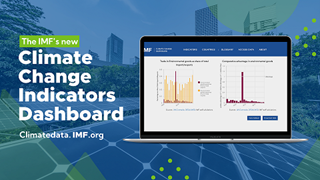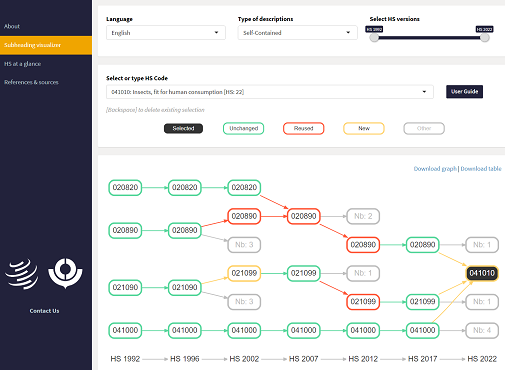UN Comtrade: the United Nations comprehensive global trade data platform #

A story requires data, and data require context. The use cases below provide some context on the use of UN Comtrade data
UN Comtrade and recent events (DESA/UNSD) #
With UN Comtrade, the impact of the War in Ukraine can be monitored and measured. We have a good relationship with the State Statistics Service of Ukraine, which provided the trade statistics even at the height of the conflict. Since the beginning of 2000, international trade has fueled the emergence of global value chains – where countries interdepend on each other for primary, intermediate, and manufactured goods. The visualization below shows the importance of Ukraine in the agriculture global value chains by exporting Maize (HS Code 1005) and Sunflower-seed oils (HS code 1512) – with a sharp decline as of March 2022, followed by a slight sign of a rebound in May 2022, and accelerating in June 2022.

Source: UN Comtrade, visualization hosted by Tableau Public
UN Comtrade and Food Security (FAO) #
The FAO’s mandate is to improve nutrition, increase agricultural productivity, raise rural populations’ living standards, and contribute to global economic growth. Among the key priorities to achieve this goal is the urgent need to eliminate hunger, food insecurity, and malnutrition. Towards this objective, the FAO plays a crucial role in providing up-to-date, reliable, and actionable data, including agrifood trade, on the state of food security and nutrition around the world to help guide policies and track progress toward these goals.
Agricultural trade is part of a global food system and vitally important for achieving the goal of ending hunger by 2030, as enshrined in the second Sustainable Development Goal. Trade has been and continues to be a major factor determining food security outcomes in the world. Exports are essential to income-earning opportunities in small open economies, while imports provide a large component of the food supply.
For FAO to track progress towards eliminating hunger, food insecurity, and malnutrition and to support evidence-based agricultural policy formulation, it relies on agricultural and food trade data from the UN COMTRADE, among other datasets. Thanks to UN Statistics Division for collecting and processing such important datasets and availing them in the public domain. The FAO Statistics Division harvests tariff line data (import and export quantities and dollar values by total and bilateral trade flows) from UN COMTRADE. It processes them together with agricultural production data from member states. Accessibility of tariff lines and aggregated trade data from UN COMTRADE is very easy and simplified, and the platform is user-friendly. The UN COMTRADE also has metadata and other resources that help to understand the data. Last but not least, the quality and coverage of UN COMTRADE data are always expanding and appreciated.
Find out more about Food and Agriculture data at FAOSTAT
UN Comtrade for Development (UNCTAD) #
UNCTAD uses UN Comtrade data to construct various information products disseminated online in the UNCTADstat Data Center and for policy analysis and research. First and foremost, the UNCTAD Trade Matrix provides UN Comtrade data cleaned, completed, and refined by cross-validation with other sources, mirroring, and statistical estimation. We also use data from UN Comtrade to compile many derived indicators, such as indices on revealed comparative advantage, trade concentration and diversification, unit-value indices, and terms-of-trade indices. Data converted from UN Comtrade serve us as the main input to record trade in specific key domains, for example, in the datasets on trade in the digital economy, the creative economy, and the oceans economy, on BioTrade and plastics trade. Combining UN Comtrade data with labor statistics has enabled us to develop a set of indicators on gender and trade, which will soon be launched on UNCTADstat. The opportunity in UN Comtrade to compare mirror flows helps us identify mis-invoicing in the scope of developing a framework for the measurement of illicit financial flows.
In a recent project, we have been exploiting the vast new possibilities of the result of the UN Comtrade upgrade to develop a novel dataset, the Global Transport Costs Dataset of International Trade (GTCDIT). This dataset records international trade in goods alongside the associated transport costs and transport work, detailed by mode of transport, pair of trading partners, and commodity. In an early project phase, many data gaps had to be filled with estimates. Over time, however, the coverage with primary data has increased, and the accuracy of our transport costs dataset will benefit from that.
UNCTAD extensively uses the UN Comtrade data and the derived datasets above for economic analysis and policy formulation, disseminated through UNCTAD’s annual flagships reports (e.g., the Trade and Development Report, the World Investment Report, the Least Developed Countries Report, Economic Development in Africa Report, the Commodities and Development Report), in policy briefs, research papers, and other publications. Among the various research areas to which they are applied, the data play a prominent role in studies on market access and market potential. In short: UN Comtrade is a precious raw material for UNCTAD’s work.
UN Comtrade as a quality benchmark (World Bank) #
TESTIMONIAL
“COMTRADE data is absolutely essential for my research and analytical work in the trade research unit at the World Bank. For one of our flagship products, the Exporter Dynamics Database that collects data from customs to construct firm-based indicators of exporter dynamics and concentration, COMTRADE serves as our quality control benchmark. We always compare total trade in the customs data we receive to total trade in COMTRADE, i.e., the totals diverge we attempt to understand the differences. COMTRADE is also crucial for any trade diagnostics and analysis we do for operational work on trade in the World Bank.”
Ana Margarida Fernandes – Lead Economist from the Trade Research team in World Bank
Visualizing UN Comtrade
With billions of trade data records, it is a challenging task to seek insight within the sea of data. Fortunately, the rising of powerful yet interactive visualization enables users to view the data without possessing deep data skills. UN Comtrade has been collecting those visualizations developed by the users to showcase innovative and experimental data uses, and they are now accessible through UN Comtrade Labs. See some examples below.
 |  |
| Climate Change Indicators Dashboard Provided by the International Monetary Fund Explore our new Climate Change Indicators Dashboard, a one-stop shop for climate and economic data. Designed with data from international organizations, the dashboard aims to become a comprehensive aggregator for statistical indicators on climate change, greenhouse gas emissions from economic activity, trade in environmental goods, green finance, government policies, and physical and transition risks. Trade in environmental goods indicators are derived from detailed commodity data from Comtrade. | HS Tracker Provided by WTO The HS Tracker is a toolset that has been developed by the Secretariat of the World Trade Organization (WTO), with the support of the World Customs Organization (WCO), to allow different stakeholders (e.g. customs and trade officials, statisticians, lawyers, researchers, etc.) to track the changes of particular headings or subheadings across different versions of Harmonized Commodity Description and Coding System (HS). |
| https://climatedata.imf.org/ | https://hstracker.wto.org/ |


